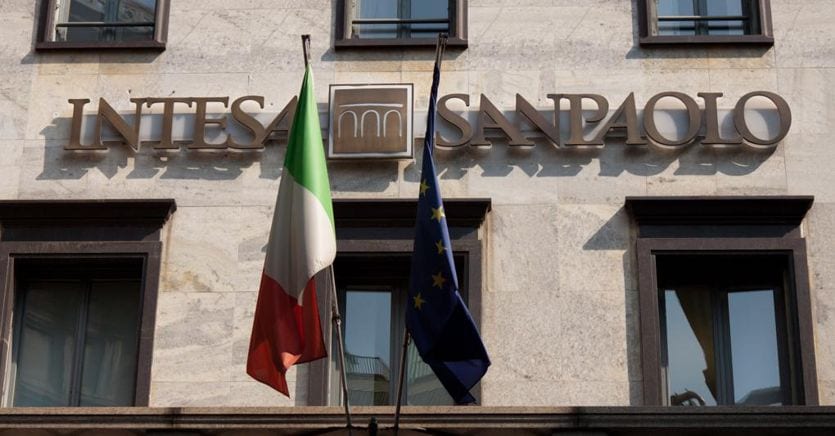Intesa Sanpaolo studies the 4-day work week with the trade unions. No more canons 5, but one less, structurally and with the same salary. The country’s first bank, which has over 74,000 workers in Italy and 96,000 globally, is preparing to lead the way on the new hourly articulation that is at the center of a broader negotiation with the trade unions on flexibility. In fact, the discussion between the institute led by Carlo Messina and Fabi, Fisac Cgil, First Cisl, Uilca and Unisin includes several chapters ranging from working hours to smart working.
The Intesa proposal
The proposal that Intesa Sanpaolo has made to the trade unions is to divide the timetable into 4 days a week for 9 hours a day. The choice of the “free” day, in the current state of negotiations, could be voluntary and there would be the possibility of varying the days worked during the week, from Monday to Friday, in agreement with one’s manager. The authorization can be granted only compatibly with the technical, organizational and production needs of the company. Requests made may be answered, both positive and negative, even by the end of the third month following the request. All of this, it goes without sayingwould be for the same salary, as indeed the national collective agreement of the ABI bankers provides.
The bankers’ contract
The Ca ‘de Sass negotiations, in fact, refer directly to the national collective agreement of Abi bankers and to article 104 which concerns the weekly timetable and its articulation. It states that the working hours of bankers must be 37.5 hours per week. Without prejudice to some provisions contained in the following 6 paragraphs. Paragraph number 4 explains, in fact, that the weekly timetable is set at 36 hours in cases of articulation over 4 days (therefore 4 days for 9 hours) or over 6 days (therefore 6 days for 6 hours). But also in cases of articulation from Monday afternoon to Saturday morning. Or including Sunday. Or in shifts. Or referred to in Article 105 of the contract.
Negotiation
From a regulatory point of view, the Intesa Sanpaolo group negotiation moves within the confines of the Abi national collective bargaining agreement and, in hindsight, the new articulation could bring an advantage in terms of fewer hours worked to the workers concerned, which would go from 37 , 5 to 36 hours per week. For the unions, however, there is no lack of grounding. The proposal, in fact, at the moment would not be for everyone, but only for those who work in offices. This is not what the 5 credit acronyms do not like and this is where the negotiating space opens up. The negotiation must in fact find its overall balance and bring together the different aspects of organizational flexibility. A theme on which, also thanks to the pandemic, there is increasing sensitivity on the part of workers who, regardless of age, ask for a lot of attention to their work life balance.
The forerunner role
The 4-day work week in our country has entered into many debates but has never managed to break into any negotiating table. However, if the first bank in the country proposes it and leads the way, then things could evolve differently. But let’s take a step back to understand the context. The “4 day week global” think tank, born in the United Kingdom on the initiative of Andrew Barnes and Charlotte Lockhart, supported by managers and academics from different backgrounds, has managed to attract more attention in countries such as the United States, Australia, New Zealand and, in Europe, Spain, more than Italy. There are, however, some stories of flexibility that go in this direction, such as that of Thun, which we have told in the pages of this newspaper. In the political arena, on the other hand, the theme of the 4-day week was supported above all by the 5 Star Movement, without however having a great practical following, above all because in our country there is a strong theme of increasing productivity, rather than decreasing working hours. We will see, perhaps, in the next few hours how the negotiations underway between the group and the unions will end. Surely it restarts a debate and brings back to the center the need to combine productivity, hours and work-life balance.
